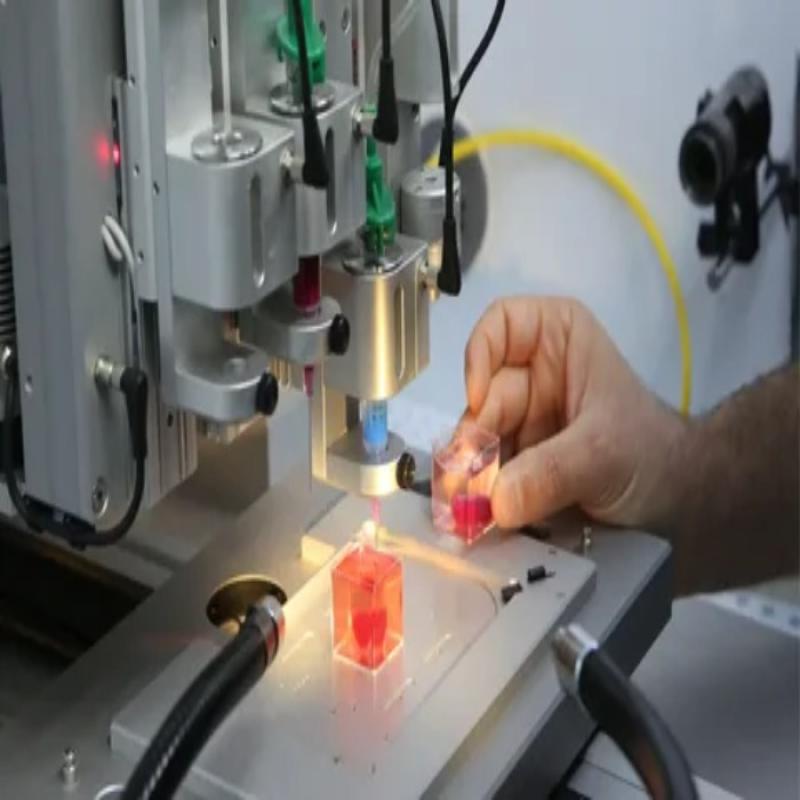History and Development
3D bioprinting is an emerging technology that uses digital models and additive manufacturing processes to print biological structures and tissues. The field began developing in the early 2000s, with some of the earliest successes including printing basic tissue structures and endothelial cells. In 2013, researchers created bioprinted cartilage tissue that was successfully implanted in animals. Continuous progress has been made since then in bioink development, bioprinting resolution, and the complexity of structures that can be printed. Today, scientists are working towards the goal of printing fully functional human organs and tissues.
Printing Cells and Tissues
At its core, 3d Bioprinting uses bioinks made of living cells suspended in hydrogels or biomaterials. These hydrogels provide a three-dimensional polymeric network for the cells to reside in and interact with. Common bioinks are based around collagen, fibrin, gelatin, alginate, decellularized tissues and synthetic polymers. Living cells such as hepatocytes, keratinocytes, stem cells and endothelial cells are then printed using various bioprinting methods to assemble them into 2D and 3D tissue structures. Popular techniques include inkjet bioprinting, laser-assisted bioprinting, extrusion bioprinting and stereolithography. Researchers are working to refine bioinks and bioprinting methods to better mimic the composition, mechanical properties and microarchitecture of natural tissues.
Applications in Regenerative Medicine
A major application of 3D bioprinting is in regenerative medicine and tissue engineering. Bioprinted tissues could potentially replace damaged or diseased tissues and help heal chronic wounds or correct birth defects. Scientists have successfully bioprinted skin, bone, cartilage, blood vessels, liver and other basic tissue structures. In the future, entire implantable human organs may be fabricated using bioprinting. Researchers are currently working towards more complex tissue models that incorporate multiple cell types organized into tissue-specific structures. Immune-protected bioscaffolds are also being developed that could safely develop tissues after implantation.
Personalized Medicine and Drug Testing
Another promising application of 3D bioprinting is in personalized medicine and pharmacology. Patient-specific tissue models printed from a person's own cells could help predict how diseases will progress or how an individual might respond to different treatments. Bioprinted "organs-on-chips" containing living human cells could replace animal testing for drug screening and development. Complex multi-organ chip systems are being designed that mimic whole body physiology and interactions. Such test platforms could provide more predictive and personalized insights into drug safety and efficacy before human clinical trials. They may also help optimize dosing and minimize adverse side effects.
Challenges
Despite rapid progress, significant challenges remain before the full potential of 3D bioprinting can be realized. Printing human-scale tissues and organs with full function will require further advancements in various technologies. Developing suitable bioinks that fully support long-term cell viability, proliferation and differentiation is an area of active research. Large-scale bioprinting methods will need to achieve higher resolutions, printing speeds and greater vascularization of tissues. Integrating multiple cell and tissue types into physiological arrangements presents integration challenges. Immune response and tissue maturation after implantation is another obstacle that current research aims to address. Continued work in these areas will be needed over the coming years and decades. However, as bioprinting capabilities continue advancing, it shows tremendous promise to transform fields like regenerative medicine, drug development and personalized healthcare. With further breakthroughs, 3D bioprinting may one day enable the fabrication of fully transplantable human organs.
For Deeper Insights, Find the Report in the Language that You want.
About Author:
Ravina Pandya, Content Writer, has a strong foothold in the market research industry. She specializes in writing well-researched articles from different industries, including food and beverages, information and technology, healthcare, chemical and materials, etc. (https://www.linkedin.com/in/ravina-pandya-1a3984191)
